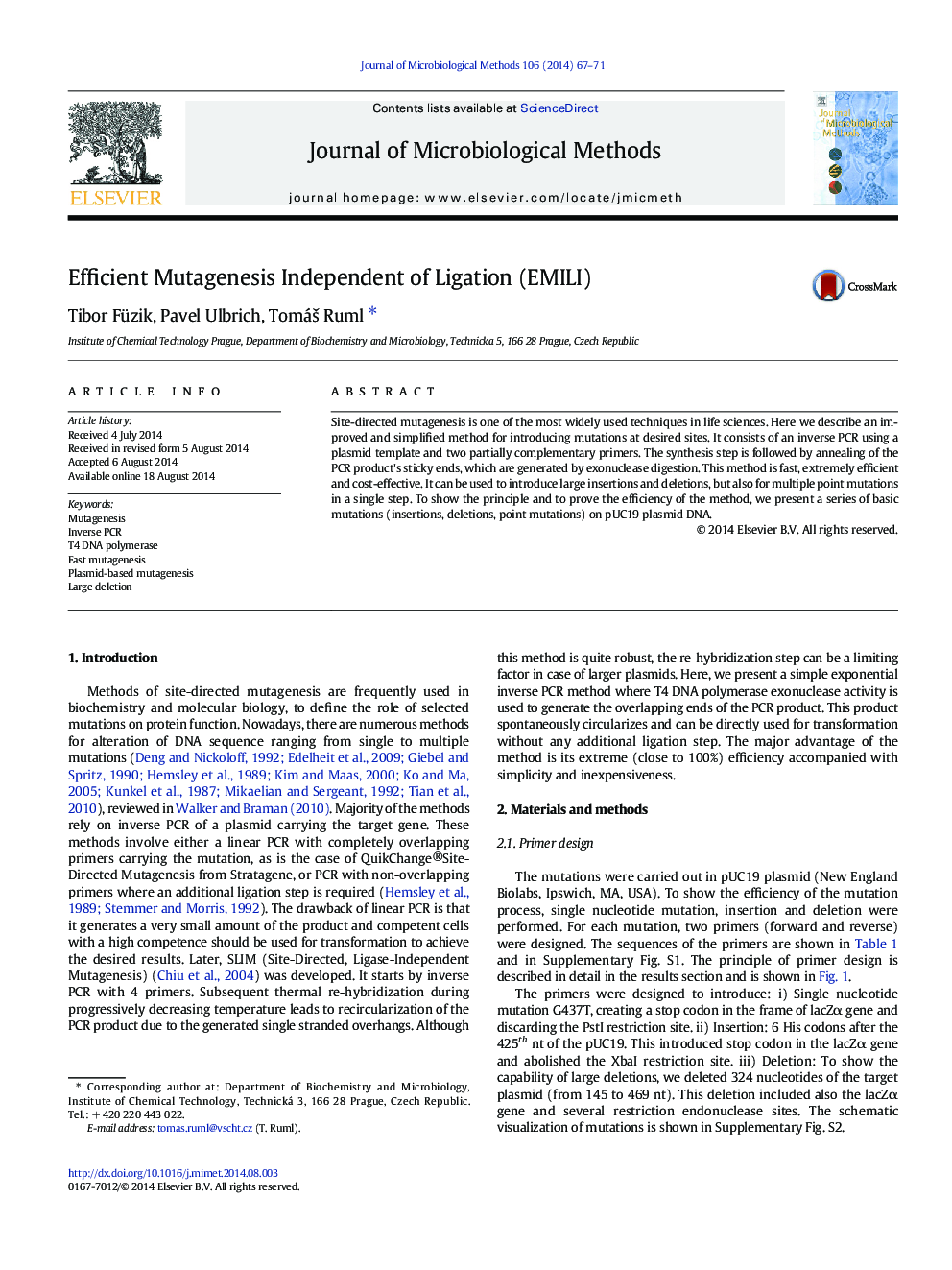| Article ID | Journal | Published Year | Pages | File Type |
|---|---|---|---|---|
| 2089958 | Journal of Microbiological Methods | 2014 | 5 Pages |
•Two primer inverse PCR-based mutagenesis was developed.•The mutagenesis is fast and almost 100% in efficiency.•Suitable for point mutations, large insertions and deletions•Suitable for large plasmid mutagenesis
Site-directed mutagenesis is one of the most widely used techniques in life sciences. Here we describe an improved and simplified method for introducing mutations at desired sites. It consists of an inverse PCR using a plasmid template and two partially complementary primers. The synthesis step is followed by annealing of the PCR product's sticky ends, which are generated by exonuclease digestion. This method is fast, extremely efficient and cost-effective. It can be used to introduce large insertions and deletions, but also for multiple point mutations in a single step. To show the principle and to prove the efficiency of the method, we present a series of basic mutations (insertions, deletions, point mutations) on pUC19 plasmid DNA.
